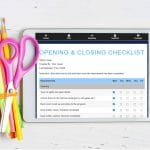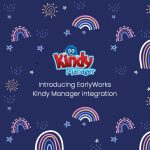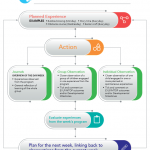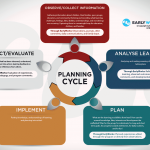“Agency” in the context of child learning
Agency? I think I know what it is… I’m not sure how to document it though?
First, let’s get a shared understanding of ‘agency’ in the context of child learning.
According to ACECQA “agency is defined as being able to make choices and decisions to influence events and to have an impact on one’s world.” So, agency means respecting each child’s right to make decisions and to initiate and direct their own learning.
As educators we have a responsibility to ensure each child’s agency is recognised, and this is made clear in Element 1.2.3 of the NQS: Each child’s agency is promoted, enabling them to make choices and decisions that influence events and their world.
There are several ways that you might support children’s agency, and the good news is, EarlyWorks makes it easy to document and share evidence of that support. In this blog we focus on Daily Communications and Photos.
Facilitating Agency at Mealtimes
- Babies and toddlers might be encouraged to take more control of feeding by holding a spoon independently, eating finger food, being given a feeding cup with handles, or choosing when to eat. This can all be documented in Daily Communications, shared with families, and with the green Extend button, turned into an observation to inform the program.

- Three to five year olds might be encouraged to take some ownership of the lunch time environment by picking flowers for the tables, making their own placemats, choosing background music, initiating conversations, or having input in menu planning. This can be documented as a Group Note in Daily Communications and shared with families.

Facilitating Agency through Photos
- Children’s agency can also be supported by
involving them in self-evaluation of learning. One way of doing this is
through photos.
- A child could be given a choice of which drawing/painting/block construction best showcases their learning. With the child’s permission, a photo can then be taken of the piece, and a caption created by the child, in which they reflect on their learning.
- The photo can then be included in an observation or journal, added to a comment, or simply shared with the family as a captioned photo. Regardless of how the photo is shared, families can comment on the photo, sharing in and contributing to their child’s learning.

Cultivating future decision makers
According to Aileen Ashford, the Commissioner for Children in Tasmania: “It is well evidenced in the literature that the accounts and lived experiences of children and young people regarding their world and how they experience it can contribute significantly and meaningfully to new knowledge and in doing so can enhance services that are provided to children.”
I wonder then, if we create an environment in which even very young children are encouraged to make choices, they will develop into confident little people who can contribute to the decisions we make at our services. By the time they leave our service, we will have given them the confidence to initiate and direct their own learning and have a positive impact on the wider community.







